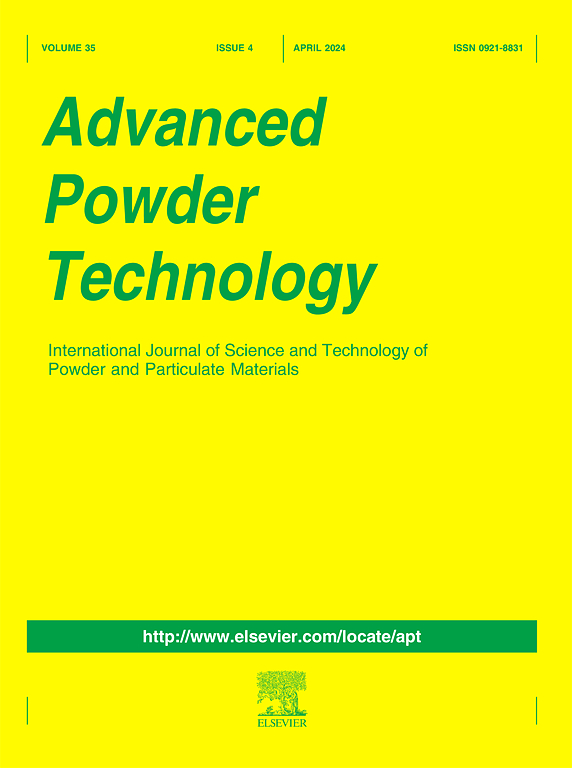Statisticals models of powder spreadability in powder-bed-based additive manufacturing
IF 4.2
2区 工程技术
Q2 ENGINEERING, CHEMICAL
引用次数: 0
Abstract
Powder spreading is an essential and common step in Powder-Bed-Based Additive Manufacturing (PBBAM) processes. However, the effect of powder properties and spreading parameters on the powder layer quality is not well understood. This study gathers characterization data on 75 steel powders to study the correlations between particle size and shape, apparent density, free-flowability, and ultimately spreading behavior. To do so, a novel instrumented apparatus is developed to investigate both powder layer density and powder layer roughness in a representative environment. Then, a characteristic subset of 28 powders from the complete dataset (exhibiting both spherical and irregular shapes) was further tested with two different spreading tools. Based on the entire collected dataset, Multiple Polynomial Regression analyses were conducted on powder apparent density (PAD) and powder layer density (PLD) to achieve both explanatory and predictive modelling, yielding respective R2 values of 82 % for PAD and 90% for PLD.

粉末床增材制造中粉末铺展性能的统计模型
粉末铺展是粉末床增材制造(PBBAM)工艺中必不可少的常见步骤。然而,粉末性能和涂敷参数对粉末层质量的影响尚不清楚。本研究收集了75种钢粉的表征数据,以研究粒度与形状、表观密度、自由流动性和最终扩散行为之间的相关性。为此,开发了一种新型仪器来研究代表性环境下的粉末层密度和粉末层粗糙度。然后,用两种不同的扩散工具进一步测试来自完整数据集的28种粉末的特征子集(显示球形和不规则形状)。基于收集的整个数据集,对粉末表观密度(PAD)和粉末层密度(PLD)进行多元多项式回归分析,以实现解释和预测模型,PAD和PLD的R2值分别为82%和90%。
本文章由计算机程序翻译,如有差异,请以英文原文为准。
求助全文
约1分钟内获得全文
求助全文
来源期刊

Advanced Powder Technology
工程技术-工程:化工
CiteScore
9.50
自引率
7.70%
发文量
424
审稿时长
55 days
期刊介绍:
The aim of Advanced Powder Technology is to meet the demand for an international journal that integrates all aspects of science and technology research on powder and particulate materials. The journal fulfills this purpose by publishing original research papers, rapid communications, reviews, and translated articles by prominent researchers worldwide.
The editorial work of Advanced Powder Technology, which was founded as the International Journal of the Society of Powder Technology, Japan, is now shared by distinguished board members, who operate in a unique framework designed to respond to the increasing global demand for articles on not only powder and particles, but also on various materials produced from them.
Advanced Powder Technology covers various areas, but a discussion of powder and particles is required in articles. Topics include: Production of powder and particulate materials in gases and liquids(nanoparticles, fine ceramics, pharmaceuticals, novel functional materials, etc.); Aerosol and colloidal processing; Powder and particle characterization; Dynamics and phenomena; Calculation and simulation (CFD, DEM, Monte Carlo method, population balance, etc.); Measurement and control of powder processes; Particle modification; Comminution; Powder handling and operations (storage, transport, granulation, separation, fluidization, etc.)
 求助内容:
求助内容: 应助结果提醒方式:
应助结果提醒方式:


